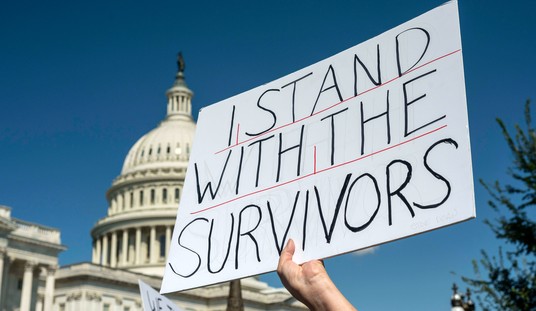According to an article on BBC Future, women’s body parts need a makeover. Well, the names of their body parts that is. According to Leah Kaminsky, “men are all over women’s bodies.” This sounds sort of x-rated until Kaminsky clarifies: “dead, white male anatomists, that is.” Then it just sounds like some sort of obscure issue that should be dealt with in Necrophiliac’s Anonymous or somewhere. But, actually, Kaminsky is trying to make a case for changing the names of female body parts, because they were named by — and sometimes after — men.
Kaminsky points out that female body parts such as “the Pouch of Douglas, Bartholin’s glands, fallopian tubes, and that elusive Grafenberg spot” are all named after men: James Douglas, Gabriel Fallopian (sic — his name was actually Fallopius), Caspar Bartholin, and Ernst Grafenberg. Not only that, even male gods got involved in the whole name-that-female-body-part game because Hymen is the Greek god of marriage ceremonies and the hymen is the membrane covering the vagina (which is often punctured for the first time during sex which, long ago in the past, first happened on a woman’s wedding night).
Kaminsky argues that “the continued use of these mostly male eponyms not only reflects the gender bias in our medical knowledge base. It may continue to perpetuate it.”
But, I mean, let’s be honest: how many people (men or women) have ever actually heard of the Pouch of Douglas or Bartholin’s glands? And, if we have heard of them, how many people actually thought they belonged to some dudes named Douglas and Bartholin? And I mean, sure, we’ve heard of fallopian tubes and G-spots, but did we know that Fallopius was a person? Or that the G in G-spot stood for some guy’s last name? So, if anyone is perpetuating the “gender bias” in female body part naming, surely it’s the people (like Kaminsky) who insist on dragging these “dead, white male anatomists” out of the dead, white male anatomist closet and parading them around.
Kaminsky points out that “plenty of examples exist where describing something in a certain way changes our perception of it.” She uses the example of a study which showed that in “languages where the word for ‘bridge’ has a feminine gender, people describe bridges as elegant.” Kaminsky wonders whether “our perceptions of the body, and its conditions, are also skewed by gender biases without us realising.” I can’t think what this would mean except perhaps that, calling fallopian tubes after Gabriel Fallopius, for example, might cause us to assume that the tubes connecting a woman’s ovaries to her uterus are bearded and wear a funny hat. It must be tough to be Kaminsky.
But, seriously, I can’t think of a single thing that renaming the hymen “vaginal corona” (which is apparently something that’s been suggested) will change (except, perhaps, people’s ability to know what other people are talking about). Are people really sitting around feeling violated by the fact that men were the people who discovered most of the body parts? I mean, as Kaminsky herself points out, “until the last century, women were almost excluded from academic medicine.” That wasn’t fair, obviously, but we can’t go back and pretend that there actually were some women there doing the discovering. Would renaming the cervix after a woman make getting a pelvic exam any less unpleasant? Would calling the uterus something more female-specific take away the pain of menstrual cramps?
And, honestly, isn’t the fact that all these guys have been basically forgotten (Kaminsky herself didn’t even know it was Fallopius and not Fallopian!) kind of feminist in and of itself? Female bodies have literally subsumed these dead, white anatomists so that, now, we don’t remember that they were people at all — they’re just lady parts. We turned some dead white guys into female sex organs — isn’t that a feminist dream come true! Come on, people!
So how about this: let’s leave women’s body parts alone. Let’s call them what they’re actually called and move on. Because, honestly, there are lots of other issues going on with women’s actual body parts (not just the names for them) and it seems a lot more reasonable to focus on those. Just saying.









Join the conversation as a VIP Member